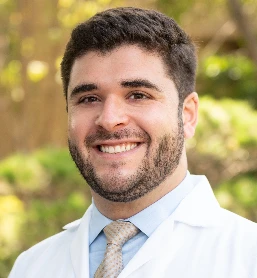2397 - Bridging the Gap: Evaluating Patient Perceptions and Expectations of Radiation Therapy (PERT) Pre- and Post-Consultation
Presenter(s)

A. Kassardjian, J. Li, P. Wang, S. Gholamin, A. Tam, R. S. Davis, N. J. Eustace, C. J. Ladbury, S. M. Glaser, S. Yoon, S. Sampath, S. V. Dandapani, Y. Liu, and A. Amini; Department of Radiation Oncology, City of Hope National Medical Center, Duarte, CA
Purpose/Objective(s): Patients’ preconceptions of radiation therapy prior to consultation with a radiation oncologist vary. Here, we examine the impact of consultation with a radiation oncologist on patients’ goals, beliefs, and concerns regarding external beam radiation therapy (EBRT).
Materials/Methods: Patients at a comprehensive cancer center were invited to complete an investigator-developed assessment evaluating their perceptions and expectations of radiation therapy (PERT) both before and after consultation with radiation oncology. Patients with any cancer subtype without history of previous EBRT were eligible. Participants answered 23 questions regarding commonly perceived side effects of EBRT, impact on daily activities, finances, transportation, and secondary malignancy. Level of concern was scored on a 5-point scale ranging from 1 (not concerned) to 5 (very concerned). Physicians could review the pre-consult questionnaire before their discussion. “Highly concerned” responses corresponded to scores =4. Responses are reported as median and interquartile range (IQR). Comparisons were performed using Chi-Squared and Wilcoxon Rank Sum tests, as applicable. A final question asked about the perceived goal of EBRT (i.e., curative or palliative) and estimated chance of cure, and concordance between responses was instead measured pre- and post-consultation.
Results: A total of 50 patients completed pre- and post-consultation assessments. Median age was 64 years [IQR 52.5-72.8], and 58% were male. Patients were non-Hispanic White (60%), Hispanic or Latino (22%), or Asian (14%). Primary disease types included breast (24%), hematologic (18%), prostate (14%), and head and neck (12%). Patients overall expressed more global concern regarding side effects pre-consultation (median: 4 [IQR 3-5]) than post-consultation (3 [2-4]). There was a significant reduction in the proportion of patients with “highly concerned” responses after consultation (pre: 72%, post: 34%; p<0.001). Table 1 summarizes the side effects with greatest change in patient perception after consultation. Finally, most patients (88%) maintained their understanding about the goal of EBRT and their estimated chance of cure before and after consultation.
Conclusion: Consultation with a radiation oncologist significantly reduced patient concerns about EBRT, particularly with regards to infection, burns, and diarrhea. Most patients preserved their understanding of goals of treatment and chance of cure. Pre-consultation assessments can guide radiation oncologists during their discussion.
Abstract 2397 - Table 1: Median score, IQR, and comparisons using the Wilcoxon rank sum test| Question | Pre-Consult Median [IQR] | Post-Consult Median [IQR] | p-value |
| Burn | 4 [2.25-5] | 2 [1-3] | p<0.001 |
| Lose Hair | 3 [1-4] | 1 [1-2] | p<0.001 |
| Infection | 4 [2-4] | 2 [1-3] | p<0.001 |
| Nausea and Vomiting | 3 [2-4] | 1 [1-3] | p<0.001 |
| Diarrhea | 3 [3-4] | 1 [1-3] | p<0.001 |
| Affect Daily Activities | 4 [3-4] | 2 [1-3] | p<0.001 |
